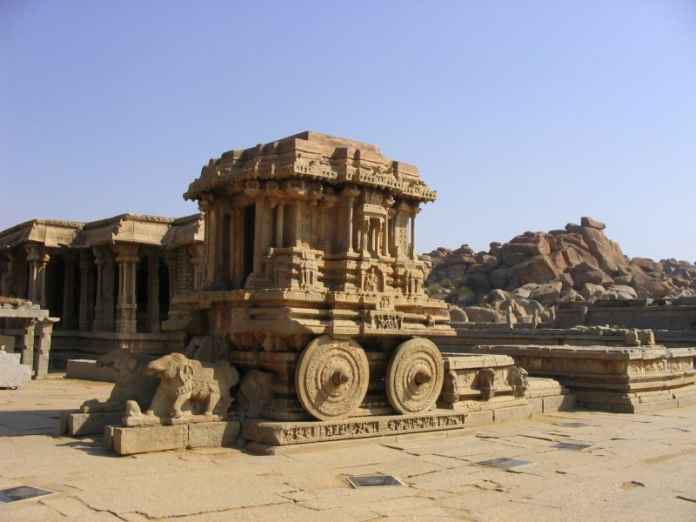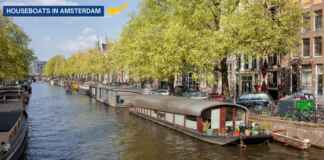Not a lot of people know about Hampi and it’s rich historical background. Mesmerizing your eyes with a landscape that’s covered in boulders reflecting the sun surrounded in banana fields that provide a nice contrast with their green leaves blowing in the wind.
Hampi is commonly known as Vijayanagar. It used to be the capital of the Hindu empire during the 14th to 16th century. Jutting out from the south banks of Tungabhadra River, it once used to be a dazzling city before a siege brought on by the Muslims destroyed the magnificent city. The siege lasted around 6 months before the Muslims were able to capsize it and raid it’s treasures. The only things that were able to withstand this attack were the monolithic deities, the ruins of houses, and temples, now abandoned with their structures only minutely intact.
Though most of the city’s monuments aren’t in the condition that you’d expect of a former imperial capital, the sad state only empowers the aura of magic that seems to seep from every nook and cranny of the place.
Important Information
- Currency: Indian Rupees
- Type of location: Hampi is a tropical city. Generally the climate stays dry and hot, aside from monsoon season.
- Neighboring cities: Hampi is approximately 350kms north of Bangalore, the capital of Karnataka. Hospet is one of the major towns located closest to Hampi at a distance of 12kms, where the nearest railway station is located. The closest airport to Hampi is location 60kms away in Bellary.
Climate conditions and the best time to plan your trip
Since it’s mostly dry and hot in Hampi all year round, it’s best to visit during the cooler months of the year. October to February are considered ideal for planning a trip. If you want to avoid the busy throngs of tourists and have a peaceful vacation you should avoid going from late December to early January, the busiest time of the tourist season.
Rain or no rain, Hampi is open to tourists 365 days of the year.
Going during the summer is the time for your budget because the prices drop! Beware though, the temperatures can soar up to 40 degrees Celsius.
Top Spots to Visit
Hampi is a city of many monuments spread across a vast area. You’re going to need at least 2-3 days if you plan of covering the major spots. Ideally you should come with a week in hand to properly embrace the aura of this place. You wouldn’t be doing justice by just rushing from one monument to the rest.
One of the most important things that you should keep in mind while touring Hampi is that there is a lot of walking involved. Regardless of whether you take a rickshaw, bicycle or moped to travel, majority of the most beautiful places require you to walk in order to explore.
Before jumping in, it should be noted that it’s probably best for you to form your own itinerary after looking at the map. There are three things that you should keep in mind. First off, how long are you going to stay for? Secondly, which are the starting and ending points for each tour that you take? Last of all, what are your interests? Are you going mostly for the photography, the cultural aspect, to take in the history or analyze the religious aspects of Hampi?
The following list of locations should help you cover the most important and unique of monuments that Hampi has to offer.
- Hemakuta hill shrines – It’s not the highest vantage point in Hampi but it does offer the best view. All of the ruins can easily be spotted from atop this hill, sprawled across the city. The hill itself is covered in temples, archways and pavilions offering a great insight into what the rest of Hampi has to offer. It’s easy to reach via a 15 minute trek to the top. Once you’ve conquered the slope, all that’s left is a flat plateau like expanse with infrequent ups and downs. Its the best place to catch the sunrise or fall in love with the sunset. Dedicated to Lord Siva, there are a lot of temples for the religiously inclined. The most important of these would be the Virupaksha temple towards the northern side.
◦ Opening Hours – Open 24/7, the ruins can be explored as per your convenience.
◦ Entry Cost – Free
◦ Location – South of the Hampi village.
◦ Time required – Two to three hours to cover all the different tit bits on the hill.
- Zanena Enclosure – Filled with mystery and intrigue the most popular theory about this place is that it was a reclusive area reserved especially for the royal women. The compound houses a lot of different monuments within it’s walls. The first one that you’ll probably notice is the Lotus Mahal. It’s architectural built is very different from what is usually found in Hampi. Nobody has been able to determine what the exact function of the Lotus Mahal was, but its one of the few structures that has been left untouched by the siege. The Queen’s Palace is another highlight of the Zanena Enclosure. Only the base of the palace is what’s left after the rival incursion. The elaborate structure of three tiers speaks greatly of how extravagant the building must have been. The Palace itself was constructed of weaker materials like wood which why only the stone foundation survived.
The route leading to various other locations like the Elephant Stables, the Ranga Temple, the Yellamma Temple and the Guards Quarters run through the center of this enclosure.
◦ Opening Hours – 8.30 am to 5.30pm
◦ Entry Cost – Rs.250 for foreign tourists and Rs.10 for Indian citizens. Photography is free of cost.
◦ Location – Royal Center, Hampi
◦ Time Required – Approximately one hour.
- Vittala Temple – A tribute to lord Vishnu, the Vittala Temple is one of the most popular attraction of Hampi. It is by far one of the most extravagant monuments located in the village, and the sight will absolutely take your breath away. The compound encases a maze of halls, pavilions and temples within its walls. The thing that stands out most is the stone chariot. The iconic structure of the Vittala Temple, the chariot is not actually mobile but a shrine immortalizing the deeds of Lord Vittala. The music pillars are another interesting feature of the temple. It’s well worth paying the guards Rs.20 extra to have a go at them and an extraordinary experience to your collection.
◦ Opening Hours – 8.30am to 5.30pm
◦ Entry Cost – Rs.250 for foreign tourists and Rs.10 for Indian citizens. Photography is free of cost.
◦ Location – East from the Hampi Bazaar, on the banks of the river.
◦ Time required – Two hours if you just plan on walking through and up to 4 hours to enjoy the location and capture it’s true essence.
- Kamalapura – This small little village wedged off the southern end of the ruins, is where a lot of the better monuments are located. First and foremost, there’s a temple enclosed within a small fort that’s more or less in the center of the village. The main Archeological Museum is another attraction that’s a must-see. It houses numerous discoveries from the ruins themselves as well as the surrounding areas.
◦ Opening Hours – The village itself is open 24/7, but the museum is open 10.00am to 5.00pm, Saturday through Thursday.
◦ Entry Cost – Entry into the village is free of cost, and the museum charges Rs.5 for all.
◦ Location – South of Hampi.
◦ Time Required – It’s a one day trip including travel time and breaks for lunch.
Food Fiesta
There a lot of options for food in and around the Hampi Bazaar, but none is more famous than the Mango Tree. Perfectly located to overlook the Tanabhadra River, it has the most wide varieties on its menu. Despite it’s popularity, it is extremely reasonable for the budget traveler.
Most of the food that’s found is of the South India variety, but the keeping in lieu with it’s tourist nature, western food is just as easy to come by. You probably won’t have to travel far for food if you’re staying in a decent hotel because most of them have one or the other kind of restaurant attached.
Why Hampi is Amazing!
It’s peaceful and far from the metropolitan hustle bustle. There are hardly any cars or pollution causing agents in the area, making it one of the most environment friendly locations for the green traveler. One of the most unique characteristics of the shops in Hampi is that they’ve built within the ruins itself. They’ve adapted their business to their surroundings without actually destroying any of it in the process.
Hampi Warnings
The morning view of Hampi may be serene, but all that chances at night fall when the lack of lights may make the abandoned surroundings look menacing instead. It’s common mistake and once you’ve managed to stay for one night, you’ll see just how amazing Hampi is. It goes without saying that regardless of where you are, you still have to apply basic day to day precautions.
Dress for comfort. Crossing the river is one of the many things that may get you muddy and dirty, so you don’t want to ruin your good clothes or be cribbing for the rest of the day. It’s absolutely essential that you’re an comfortable as possible to battle the heat and truly enjoy your trip.
Though most of the attractions are open 24/7, you should probably avoid roaming around after night fall, especially if you’re alone. It’s not that too many incidences have occurred, but the lack of light makes it very difficult of anyone to navigate their way. Even the trails look remarkably different in the evening than they look during the day.
Planning your Budget
- Sightseeing – Aside from the three locations that require you pay, all of Hampi is free of cost. Crossing the river costs Rs.1, which is incredibly cheap. Don’t waver to the whips of beggars and children, because they’re probably just skipping school or looking to dupe you.
- Accommodation – Most decent accommodation will cost you approximately Rs.200-300 per night. There are a few luxury locations as well if you’re looking to splurge some more, and even if you’re looking to spend less, you can get a hut by the river for Rs.50 per night.
- Food – On average, a respectable meal will cost around Rs.40. If you’re looking to make a night out of it, you can grab an amazing dinner by the riverside for approximately Rs.200.
- Transportation – There are a lot ways to get around Hampi, the most popular of which is walking. To marginally protect yourself from wear and tear in order to enjoy the monuments you can either rent a bicycle for Rs.5 per hour or a moped for Rs.200-300 for a day. If you can’t ride or are looking to relax, you can grab an auto rickshaw! Their price varies from location to location, but they do tend to be more expensive that the alternatives.
- Shopping – There really isn’t much to shop for in Hampi. Basic day to day amenities are sold at M.R.P.
- Tourist Guide – It’s recommended that you hire a tourist guide when visiting Hampi. The wide array of monuments and attractions are easily covered, and the guide sometimes even take you some of the more secluded places that are absolutely beautiful. You’ll have to negotiate the prices with respect to which areas you want to cover and how long you need the guide for, but do keep in mind that you should pay the guide after the tour is finished not before hand.














